March 24, 2025 – Day 36 of 100-Day Dharma Talk, Sutra Lecture 5, Buddhist Social Studies Course Lecture 5
Hello. Today is the 36th day of Venerable Pomnyun Sunim’s 100-Day Dharma Talk. Today features both a sutra lecture and a Buddhist Social Studies Course lecture.

After completing his morning practice and meditation, Sunim headed to the Jungto Social and Cultural Center to give the sutra lecture.

At 8 AM, staff members from an organization that has provided significant support and cooperation for JTS Philippines projects visited Sunim during their trip to Korea. As ongoing support and cooperation are needed, Dharma Teacher Hyanghun, the director of JTS Philippines, planned to accompany them on their week-long visit to Korea, guiding them through Jungto Society’s main temples and nearby tourist attractions.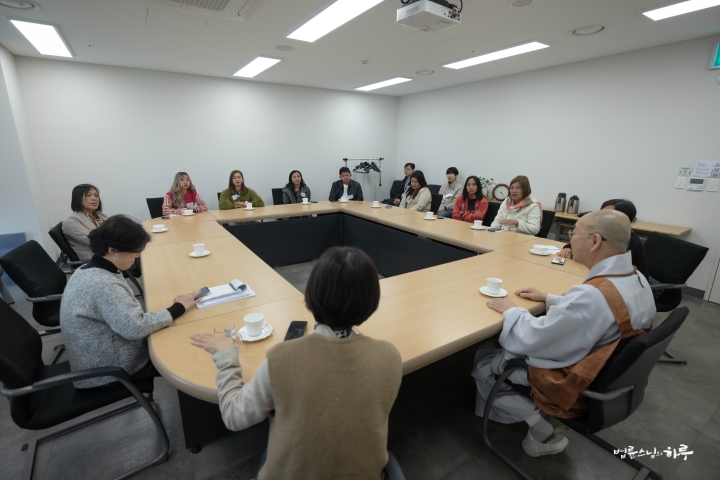
Sunim greeted them warmly.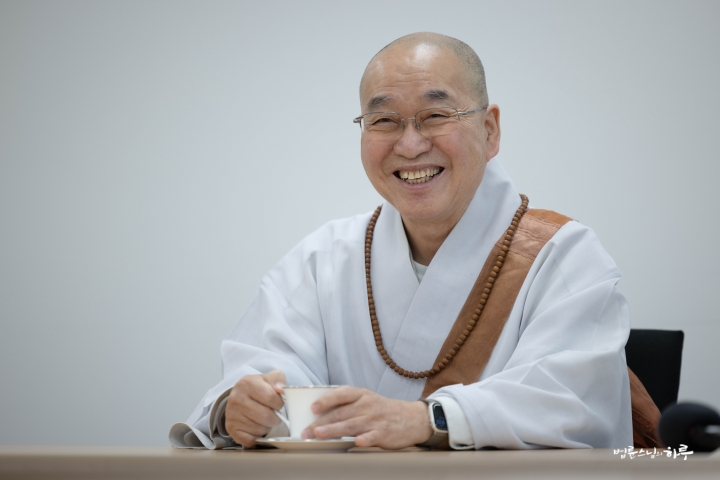
“Where did you visit yesterday?”
“We visited the DMZ and saw the divided Korean peninsula. We could see Kaesong City through telescopes. Learning about the process of division between North and South Korea made us sad. In Mindanao, too, conflicts continue without end.”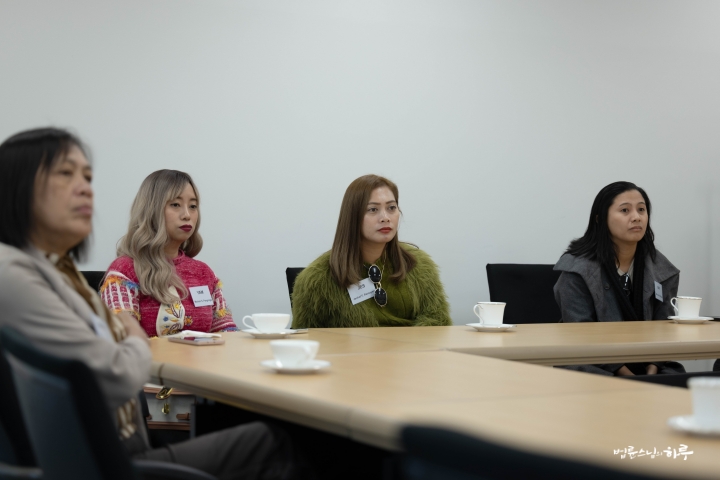
“When inter-Korean relations were good, many South Korean companies produced numerous products in the Kaesong Industrial Complex. Now, with deteriorated relations, everything has shut down. War is tragic for any reason. The possibility of another war on the Korean Peninsula makes preventing it the greatest challenge for Korean people. Looking at Seoul, it doesn’t seem like a country on the brink of war, does it? Yet the DMZ is only 40km away from Seoul.
I hope you enjoy your week in Korea. I should be guiding you myself, but during these 100 days, I need to give Dharma talks and cannot travel.” 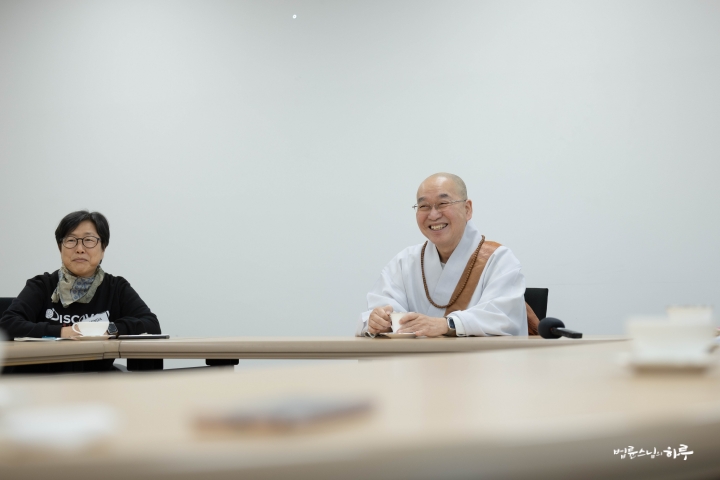
Sunim gave gifts to the visitors, and they also presented him with small gifts in return.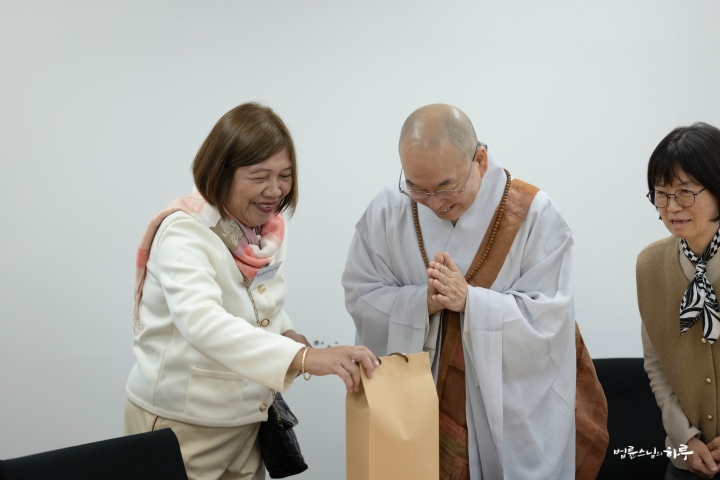
After taking commemorative photos together, Sunim moved to the third-floor Dharma hall to give the sutra lecture.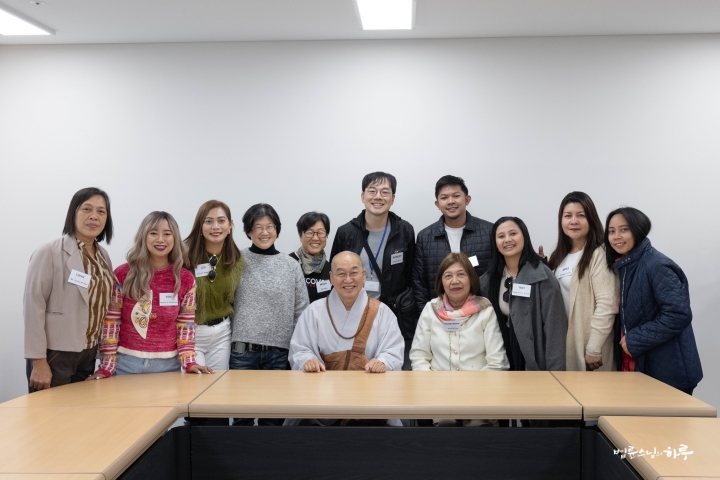
About 120 people were present at the venue, with approximately 560 people connected via the online livestream. After the audience requested the Dharma talk with three bows, Sunim ascended to the Dharma seat.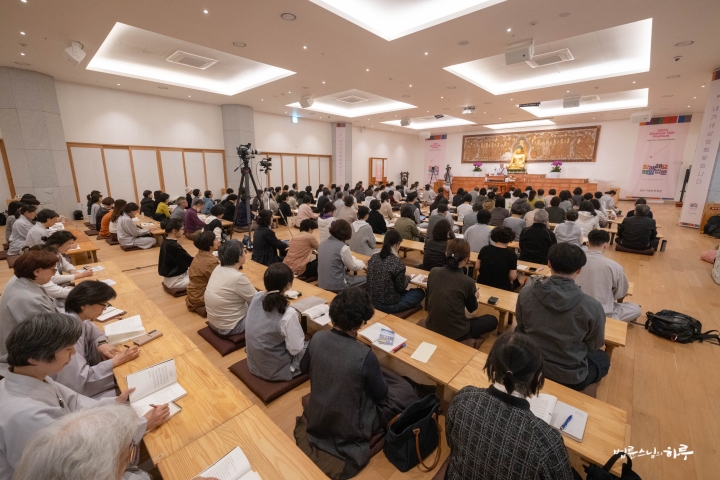
Today is the fifth session of the sutra lecture series. Sunim began by summarizing the content from the previous session. Then, everyone recited together the first through sixth sections of the Diamond Sutra that had been covered so far.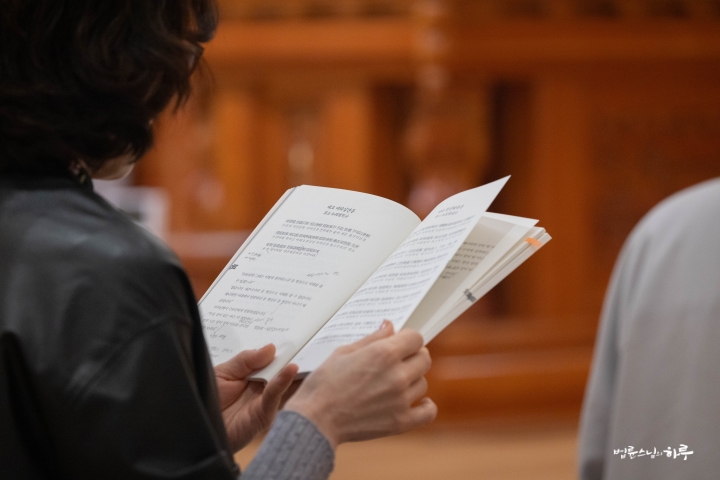
After the recitation, Sunim continued with explanations of the seventh and eighth sections of the Diamond Sutra.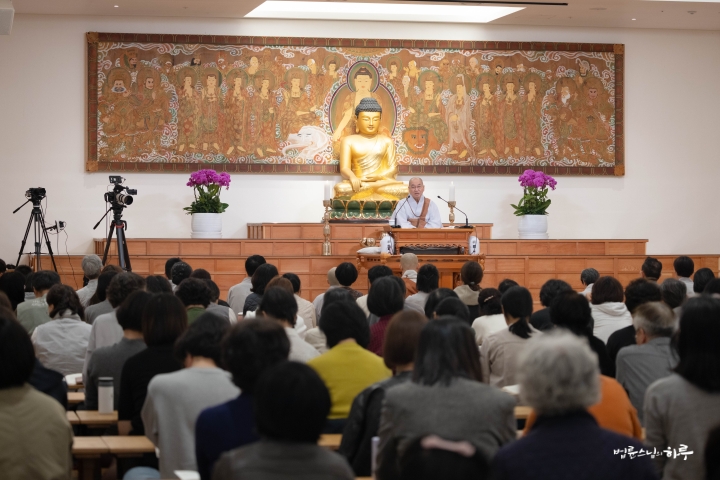
“The sixth section of the Diamond Sutra that we studied last time begins with Subhuti’s question after hearing the Buddha’s Dharma talk: ‘Will sentient beings be able to generate faith upon hearing such a teaching?’ This aligns with the title of the sixth section: ‘The rarity of true faith.’ The Buddha reassured him not to worry too much, saying that future sentient beings would also be able to awaken upon hearing this Dharma. However, Subhuti had another doubt in his mind.
‘If there is no such thing as Dharma, how did the Buddha attain the Dharma and expound 84,000 teachings?’
Subhuti was thinking, ‘The Buddha awakened to the law of dependent origination under the Bodhi tree and taught countless Dharmas for 45 years, so what does it mean that there is no such thing as Dharma?’ When this doubt arose, the Buddha asked, ‘Subhuti, what do you think? Has the Tathagata attained Anuttara Samyak Sambodhi? Is there any Dharma that the Tathagata has expounded?’ The Buddha, seeing through Subhuti’s mind, asked these questions, which form the seventh section called ‘No Attainment, No Teaching.’ 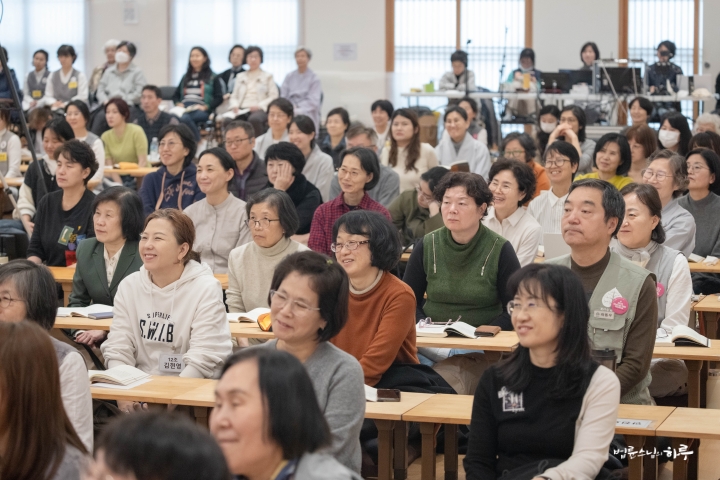
Not a Single Dharma Has Been Attained or Taught
Let’s say there is a mirror here. If you place a cup in front of the mirror, the mirror reflects the cup. If you place a microphone in front of the mirror, the mirror reflects the microphone. If you bring a clock in front of the mirror, the mirror reflects the clock. So how many objects can this mirror reflect? It can reflect an infinite number of objects. It will reflect whatever comes before it. The mirror reflects exactly what appears before it, just as it is. However, in reality, the mirror has not created a single image. When an object comes before the mirror, it simply reflects that object as it is. That’s why it requires no effort at all. Without any exertion, it just reflects whatever object appears. We can say that the mirror doesn’t decide what to reflect; it simply reflects according to conditions. This is precisely the true nature of the Dharma.
Suppose ten people come to the Buddha and ask, “How do I get to Seoul?” The Buddha would ask in return, “Where do you live?” If someone answers, “I live in Incheon,” the Buddha would say, “Go east.” If someone answers, “I live in Suwon,” the Buddha would say, “Then go north.” If someone answers, “I live in Gangneung,” the Buddha would say, “Then go west.” In this way, the Buddha taught countless dharmas. Yet in reality, he did not teach a single dharma. 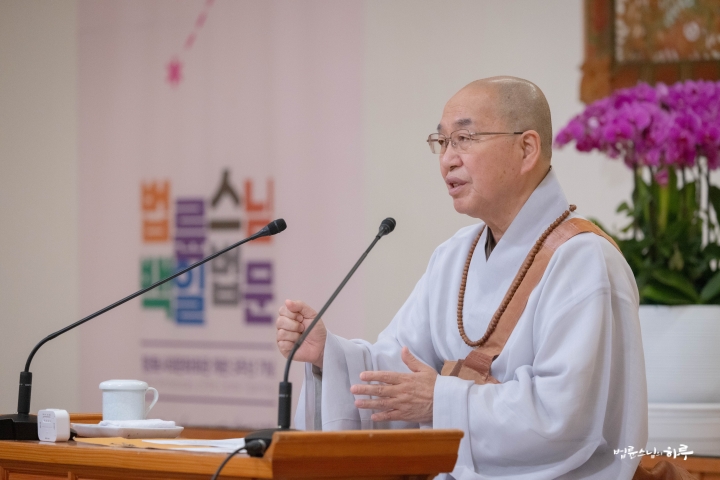
If conditions are not formed, the direction to Seoul is not determined. Only when conditions come together does the direction to Seoul appear. That is why it is said that before conditions are formed, not a single dharma is fixed. In other words, this is called “emptiness” (空). However, when conditions arise, the direction is precisely determined, whether it’s east or south. This is called “form” (色). Or we express it as “arising according to conditions.” In the sutras, it says “the Buddha realized this dharma and taught this dharma,” but he didn’t realize some fixed dharma and say “this is the truth.” What the Buddha realized was “the principle that there is nothing that can be called the truth.” In other words, he didn’t realize that the path to Seoul is eastward, but rather that “the path to Seoul is not predetermined.” Does this mean there is no path to Seoul? No. Does it mean you can go to Seoul any way you want? Not that either. It means that when conditions are formed regarding your position, the direction to Seoul is determined at that moment.
If we cling to the words “the Buddha attained enlightenment,” it seems as if there was something separate that he realized and taught. However, the Buddha did not realize any fixed dharma nor did he teach any fixed dharma. He realized the principle that there is no fixed dharma. Because there is no fixed dharma, he taught countless dharmas according to conditions. Therefore, the dharma taught by the Tathagata cannot be grasped as “this” or “that,” cannot be spoken of as “this” or “that,” and cannot be called “truth” or “not truth.” This is because everything arises according to respective conditions. That is why the title of the seventh section of the Diamond Sutra is “Nothing Attained, Nothing Spoken” (無得無說分). It means that not a single dharma was attained, and not a single dharma was taught. 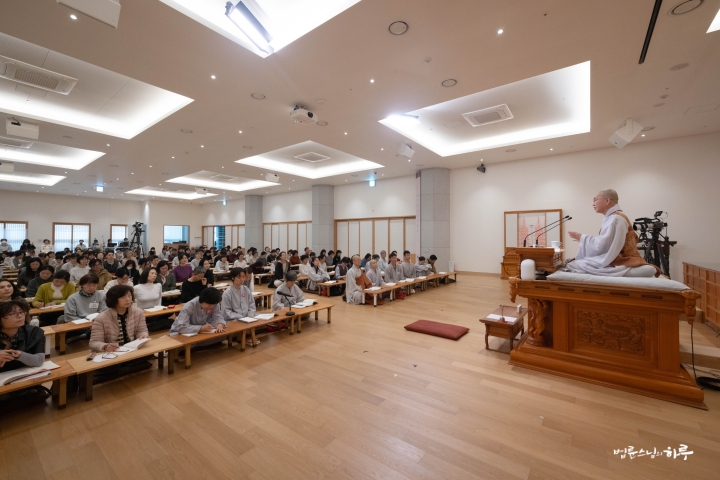
The Dharma Was Taught According to Conditions, Without Right or Wrong
The Diamond Sutra emerged about 500 years after the Buddha’s parinirvana. Why did people at that time publish the Diamond Sutra claiming, “This is the Buddha’s teaching”? It was because existing Buddhist schools had been using the Buddha’s words as a standard to judge what was true or false, right or wrong. They would argue, “The Buddha said this” or “The Buddha did not say that,” using his words as a measuring stick to raise issues and engage in sectarian debates. In response, the Mahayana Buddhists assert in the Diamond Sutra that such arguments are meaningless. The Buddha taught us not to argue, so isn’t it contradictory to debate what is right or wrong using his teachings? The Buddha simply taught numerous dharmas according to conditions. The Diamond Sutra criticizes Hinayana Buddhists for disputing fast and slow, high and low, right and wrong based on the Buddha’s teachings.
We always have a tendency to compare what is better. However, since everything arises according to conditions, nothing is inherently higher or lower, faster or slower, right or wrong. People are simply attached to words. Whether you go east or north, no matter where you start from, the message is to reach Seoul. Ultimately, the Buddha taught the path to enlightenment from each person’s conditions and position. The essence of the Diamond Sutra is to realize that there is no reason to argue about such matters. 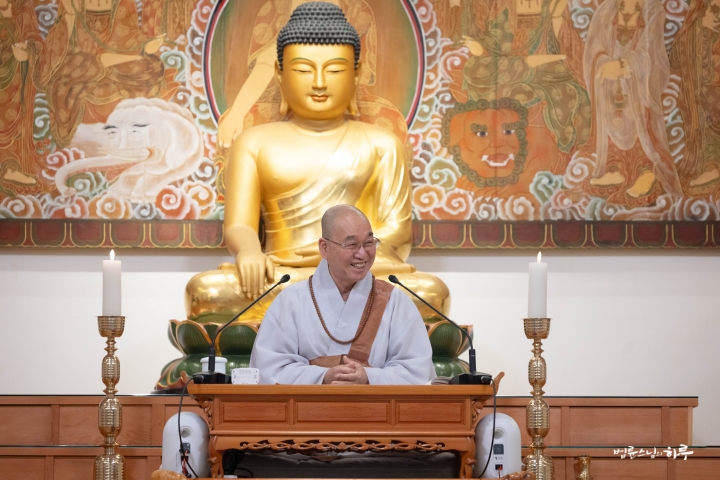
True Blessings Are Those That Do Not Turn Into Suffering
The eighth section, “Dependent Arising According to the Dharma,” means that all past Buddhas appeared by relying on this principle of No Everlasting Abiding Dharma. The No Everlasting Abiding Dharma refers to the law that nothing has permanence. All Buddhas appear by relying on this principle, and all dharmas arise from it. We might think that if there is no fixed dharma, then the Buddha shouldn’t be able to tell someone to go east. So if someone from Incheon asks how to get to Seoul, we might think the Buddha should keep his mouth shut and say nothing, since it’s said that this dharma cannot be attained or explained. Yet the Buddha did say to go east. This is because although there is no inherently fixed dharma, the dharma is taught according to causes and conditions.
The Buddha asked Subhuti, “If someone filled the three thousand great thousand worlds with the seven treasures and gave them away as an offering, wouldn’t this person gain great merit?” Subhuti replied, “Very great indeed. Because this merit is not the nature of merit, the Tathagata speaks of great merit.” Since there is no merit to speak of, but in this context it is said there is great merit, we might think, “There is no blessing, but he falsely says there are many blessings.” However, when someone asks the way from Incheon to Seoul, and the Buddha says to go east, that’s not a lie, is it? Similarly, when one creates merit by giving away many treasures, there is indeed merit. However, this merit is limited and will eventually disappear.
When we give to others, expectations arise. So when the other person shows no response, we feel disappointed and resentful. If we hadn’t given anything, there would be nothing to feel disappointed about, but because we gave, we become disappointed. Such merit can turn into anger. For this reason, giving without expectations is greater than any act of giving done with expectations, no matter how grand the latter may be. 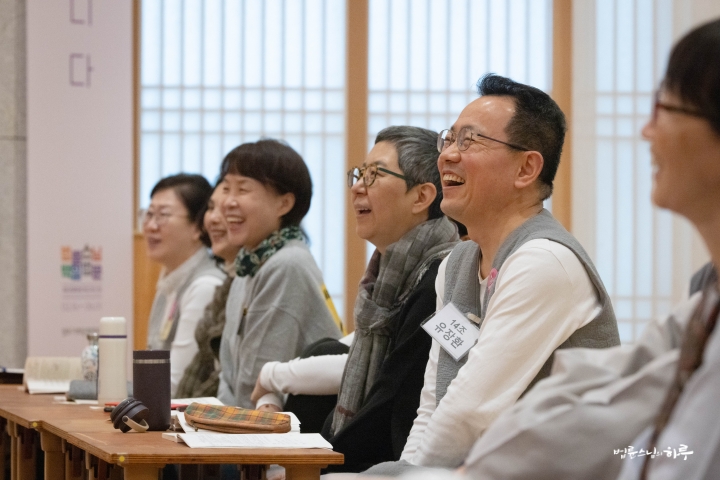
The phrases from the Diamond Sutra’s Four-Line Verse, “Do not create any form” and “No form has any substance,” teach us that when we understand the principle that all phenomena are empty, there will be no reason to get angry, irritated, hateful, disappointed, or afraid. This is true happiness. This happiness doesn’t transform into suffering. Simply put, it means “Stand in the perspective where there is nothing to dislike and no fixed dharma.” When helping others, act with compassion from this perspective. Helping others is good, but if disappointment arises afterward, maintaining this perspective prevents that. When you do, no residue remains from your actions to return as suffering.
Breaking the Concept of Dharma to See the Truth
Buddha, knowing that sentient beings cannot escape the desire for blessings, taught that making offerings filled with the seven treasures brings great merit. Then he explained that there is even greater merit.
“If someone receives and upholds even a four-line verse from this sutra and explains it to others, that merit surpasses the former merit.”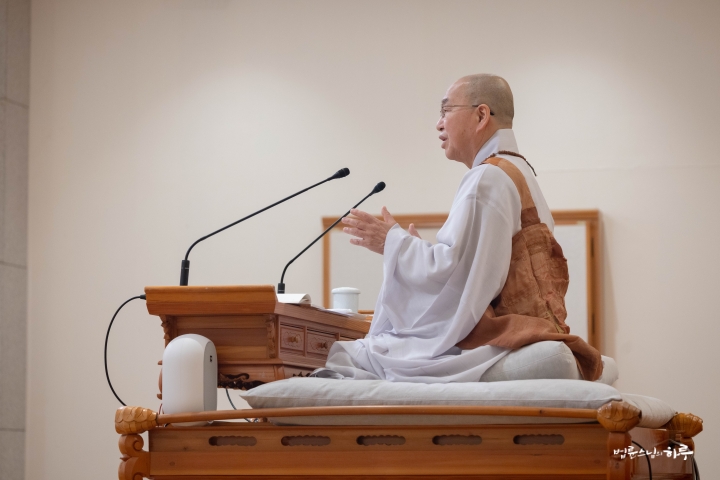
This teaching doesn’t apply only to sentient beings. It also awakens those who cling to the idea “This is the Buddha Dharma” while actually contradicting the truth. It breaks through the thinking of those who are trapped in the concept of Buddhism, guiding them to a higher, broader place. In other words, this sutra aims to enlighten not those who know nothing about Buddhism, but those who already know it well. It tells Hinayana practitioners who have already studied Buddhism, “You are attached to the concept of dharma; you must break through this to see the real truth.” It’s about awakening people like Buddhist scholars and monks who believe what they know is supreme. However, whether one has the concept of “I” or the concept of “enlightenment,” all are merely concepts. There are no higher or lower concepts. In this sense, this teaching is something everyone can understand and practice.
Let me give an everyday example. When placing incense burners and candlesticks on an altar, they should be balanced on the left and right. If someone places them carelessly and you get angry, you’re attached to the idea that “there is a fixed way.” Your anger is your problem. You get angry because you’re attached to the idea that there is a fixed way. However, if the other person responds, “The Diamond Sutra says there is no fixed dharma, so what’s wrong with placing them any way?” then that person is attached to the idea that “there is no fixed dharma.”
The teaching of the Diamond Sutra is to guide people toward order when there is too much disorder, and toward flexibility when there is too much rigidity. Understanding this makes the Diamond Sutra very simple. Buddha’s teachings are not difficult because they follow natural law.”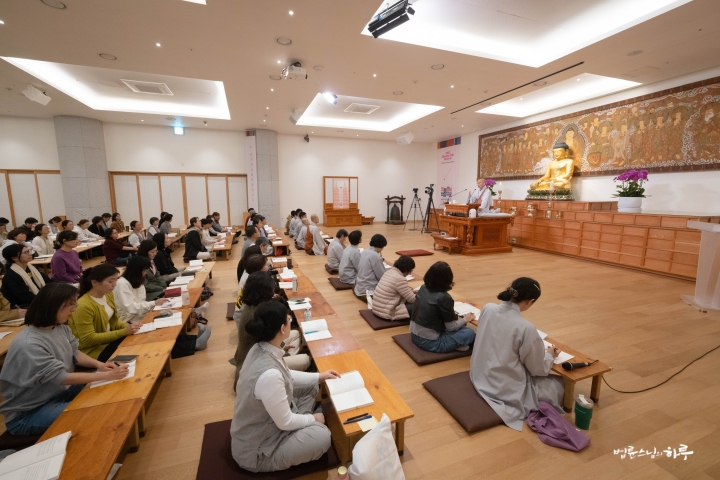
Sunim concluded the lecture, stating that he would continue with the explanation of Chapter 9 of the Diamond Sutra in the next session.
Participants gathered in groups to share their thoughts, while Sunim had lunch with the Sangha in the basement cafeteria. In the afternoon, he worked in his office, reviewing his overseas schedule for the year and preparing for his Buddhist Social Studies Course lecture.


As the sun set, at 7:30 PM, Sunim delivered the fifth lecture of the Buddhist Social Studies Course in the basement auditorium of the Jungto Social and Cultural Center. Today’s topic was “Life, Evolution, and the History of Human Civilization,” focusing on how humanity is interconnected socially and historically.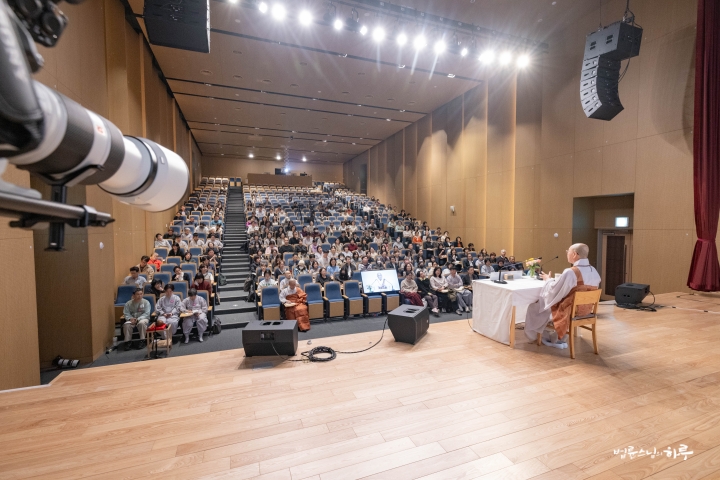
About 200 students attended in person in the basement auditorium, while approximately 1,900 people connected to the online live broadcast. Before beginning the lecture, Sunim had collected questions from the students. After watching a video presenting the results of this survey, he began his lecture.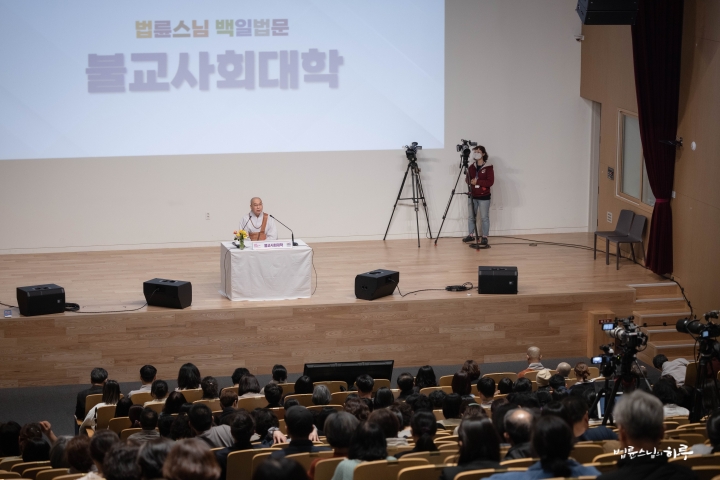
Sunim explained in detail the origin and evolution of life and the development of human civilization, then discussed the operating principles of DNA, proteins, and cells, which are the core components of life.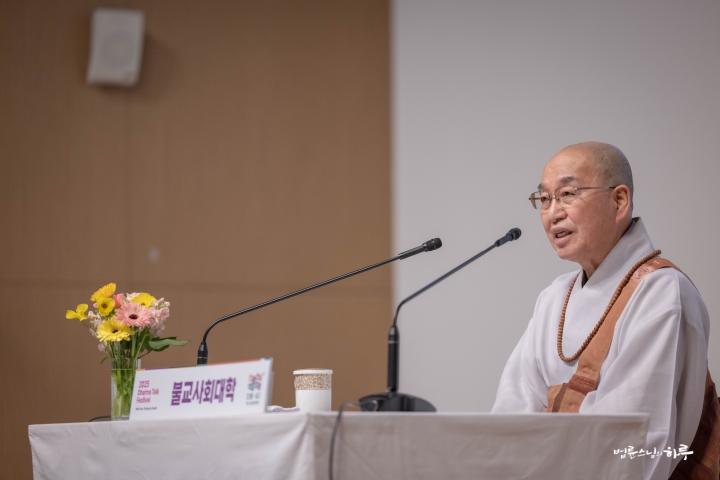
“According to modern scientific research, life first appeared approximately 3.8 billion years ago. Earth’s history began 4.54 billion years ago, so there was a period of about 700 million years when only matter existed without life. This period is called the ‘Hadean Eon.’ After this came the ‘Archean Eon,’ characterized by prokaryotic cells, followed by the ‘Proterozoic Eon,’ when eukaryotic cells appeared. Prokaryotic cells refer to organisms like bacteria. After the Proterozoic Eon, we enter the ‘Phanerozoic Eon,’ which begins with the Paleozoic Era. What comes to mind when you think of the Paleozoic Era? Trilobites, right? The Paleozoic Era is divided into several periods, and during the Carboniferous period, plants like ferns flourished extensively, which some theories suggest formed today’s coal deposits.
Explosive Increase in Species 540 Million Years Ago
The Hadean Eon lasted until 3.8 billion years ago, followed by the Archean Eon until 2.5 billion years ago, and then the Proterozoic Eon until 540 million years ago. Up to this point, even though life had emerged, it barely evolved beyond the single-cell level. In the Phanerozoic Eon, trilobites appeared, vertebrates began to develop, and land plants like ferns emerged. Life suddenly exploded with numerous species appearing around 540 million years ago. This period is referred to as the biological Big Bang because countless species emerged in an instant, like an explosion. This period is also called the ‘Cambrian Period.’ The timeline of life is largely divided into before and after the Cambrian Period. The Paleozoic Era spans from 540 million years ago to 250 million years ago, followed by the Mesozoic Era from 250 million years ago to 66 million years ago. The most representative creatures of the Mesozoic Era were dinosaurs. The Cenozoic Era began 66 million years ago, marking the age of mammals. Although mammals first appeared during the Mesozoic Era, they flourished rapidly after entering the Cenozoic Era. 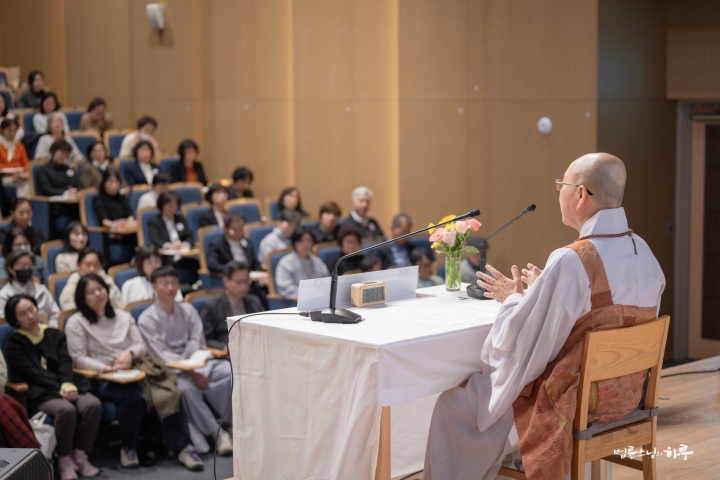
These geological periods were divided based on times when material collided with Earth or rapid climate changes caused mass extinctions of living organisms. Sometimes, environmental changes on Earth led to the extinction of 90 percent of species. Afterward, surviving organisms flourished rapidly in the changed environment, or new species emerged.
The order of biological evolution progressed from prokaryotic cells to eukaryotic cells, then from unicellular to multicellular organisms. Further evolution led to the division into plants and animals. Animals continued to evolve until vertebrates appeared. Vertebrates further evolved into fish, amphibians, reptiles, birds, and mammals. 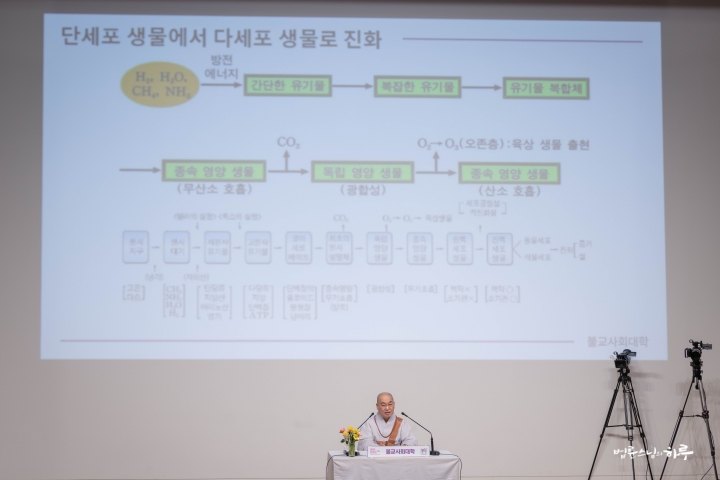
When Did Humans Appear on Earth?
Long after mammals appeared, about 7 million years ago, human species separated from primates. Some suggest that humans may have been almost fully upright by then, while others explain that they were more upright than before but not completely bipedal. In any case, human species began to separate from primates about 7 million years ago.
This evolution led to Australopithecus about 3 million years ago. All of this occurred in East Africa. By this stage, human species had become fully bipedal. Then, about 2.5 million years ago, they began using tools. With the beginning of tool use, the name “Homo” was assigned to denote human species. This led to Homo habilis, followed by Homo erectus, known for using fire. Within the Homo erectus period, the human species we now call “Neanderthals” appeared. Neanderthals emerged in Africa and spread throughout Europe and the world. Meanwhile, evolution continued in Africa, and around 300,000 years ago, Homo sapiens emerged. They too crossed from Africa to spread worldwide. Not just these two species, but various earlier species evolved as well, with as many as five human species coexisting on Earth at one time. Gradually, other species disappeared, and about 40,000 years ago, for unknown reasons, Neanderthals vanished from Earth. Now, only Homo sapiens remain. It’s not necessarily that Homo sapiens survived because they were the smartest, but rather they adapted to their environment and survived. They may seem like a superior species because they’ve survived until now, but that’s not necessarily the case. 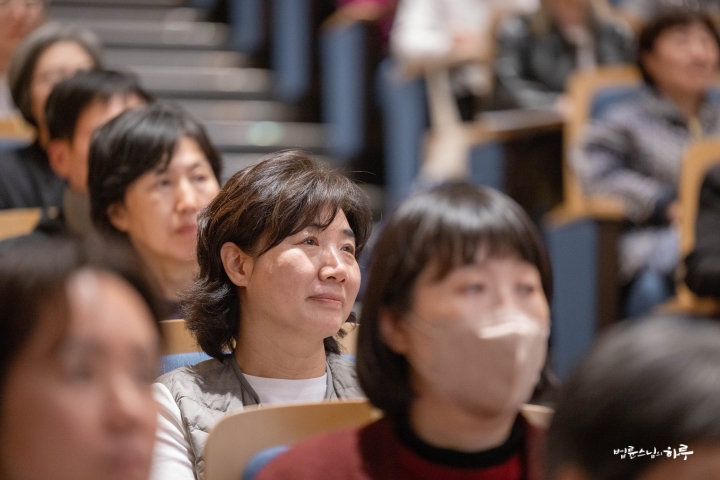
Among primates, the species that diverged closest to humans is the chimpanzee, which separated from our lineage about 7 million years ago. Why did humans emerge as a special species among primates? There are various hypotheses, though none have been definitively proven yet. However, the most credible hypothesis attributes it to climate change in Africa. At that time, Africa was not dry but covered with dense forests. The human species, like other primates, lived in trees eating fruits, but Africa’s climate changed to become drier. Trees became sparse and eventually the landscape transformed entirely into grasslands. Among the primates, some species migrated to areas where trees remained and continued living in them, while one species descended from the trees and began living on the ground.
While they had eaten fruits in the trees, once they came down to the ground, they began hunting and eating animals. Their bodies adapted to enable hunting. They began walking upright, and as they increasingly used their brains, their cognitive abilities developed. However, at this stage, their brain size was only about 400cc, not much different from that of monkeys. 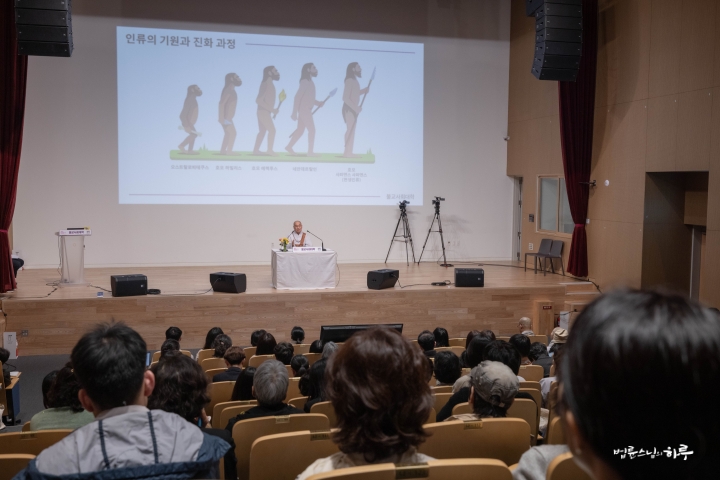
Starting from a single cell, all species evolved like branches spreading out from a tree. Did they only grow upward, or did they also spread sideways? They certainly spread sideways as well. Therefore, all living organisms on Earth today, whether single-celled bacteria or humans, have all evolved over 3.8 billion years. It’s incorrect to think that some species are less evolved while humans are more evolved. Each species has simply evolved separately as branches diverged, and each is at its own highest stage of evolution. Every species on Earth today, from bacteria to humans, is the result of evolution. We shouldn’t think of humans as being at the top of evolution. That’s a human-centric way of thinking. Everything has continuously changed through the process of evolution.
How Did Human Civilization Begin?
Through this evolutionary process, human species began to form civilized societies about 10,000 years ago. When we talk about civilized societies, we’re referring to the Neolithic period onward. The Neolithic period begins when humans started sharpening stones to make tools like knives and axes. 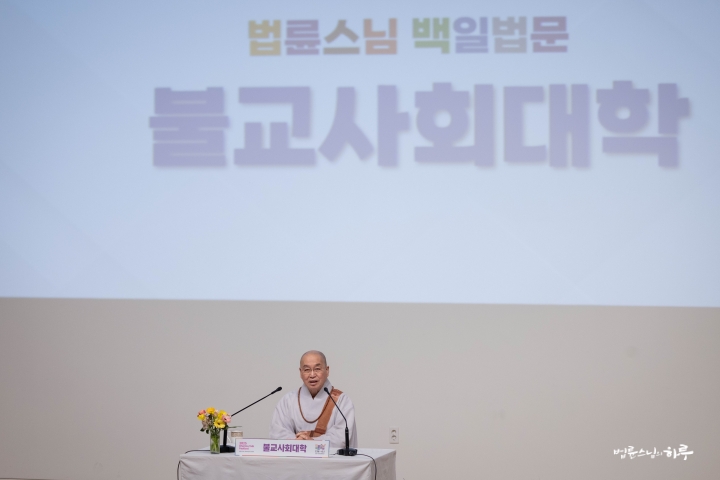
How did civilization develop earlier in some regions than others? The differences in civilizations arise from differences in the speed of innovation and the speed of diffusion. The speed at which something is first created is called the speed of innovation. The speed at which it is learned and spread is called the speed of diffusion. During the Paleolithic period, people didn’t settle in one place but were constantly moving, so both the speed of innovation and diffusion were slow. In particular, the speed of innovation was so slow that it was slower than the speed of diffusion. As a result, the level of civilization was similar worldwide. However, during the Neolithic period, as people began to settle together, the creation of new ideas gradually increased. As the speed of innovation became faster while the speed of diffusion remained slow, differences between civilizations in different regions began to emerge.
Most regions where Neolithic civilizations began were arid areas. Why is that? With stone knives and axes, it was impossible to cut down trees. However, it was possible to cut grass. That’s why all civilizations started in grassland areas. Civilization only expanded into forested areas after the emergence of iron tools. Civilizations moved from the Yellow River basin to the Yangtze River basin, and from the Indus River to the Ganges River about 3,500 years ago when iron civilization spread. From this point on, forested areas became the centers of civilization. 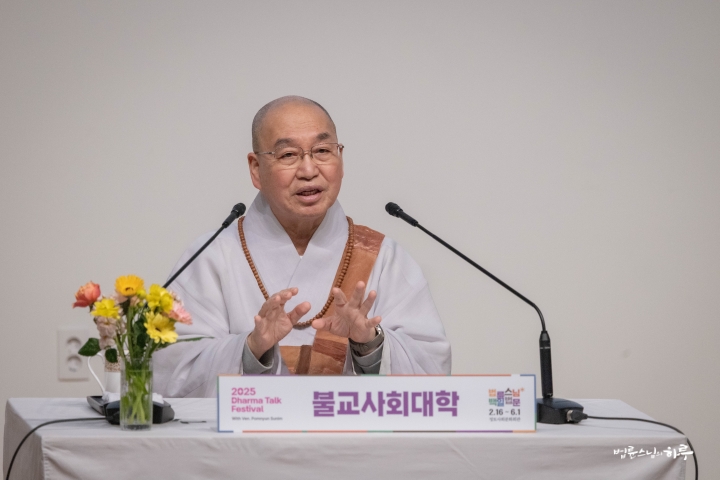
As civilization formed, clan societies evolved into tribal societies, followed by ancient kingdoms, absolute monarchies, and empires. During this progression, gender and class discrimination emerged. Through various stages of class development, societies maintained ancient slave systems, then transformed into medieval feudal societies based on serfs, and eventually advanced to capitalist societies based on workers. Through these changes, today’s industrial society began.
How Did Life Begin?
There are two main theories about the origin of life. First, the theory of extraterrestrial introduction. Second, the theory of terrestrial origin. The extraterrestrial introduction theory suggests that seeds of life fell to Earth when certain planets collided with it. This doesn’t necessarily mean aliens visited. However, even if life was introduced from outer space, when discussing the origin of life, we inevitably face the same question: “How did extraterrestrial life originate?” In a similar context, the creation theory faces the same issue. The creation theory that “God created life” inevitably raises the question, “Then who created God?” However, religions tell us not to ask such questions. They claim God has always existed. If that’s the case, couldn’t we also say that life has always existed? While this argument might seem plausible, it lacks scientific credibility. From a scientific perspective, whether life was introduced from outer space or originated on Earth, the crucial question is how it first appeared.
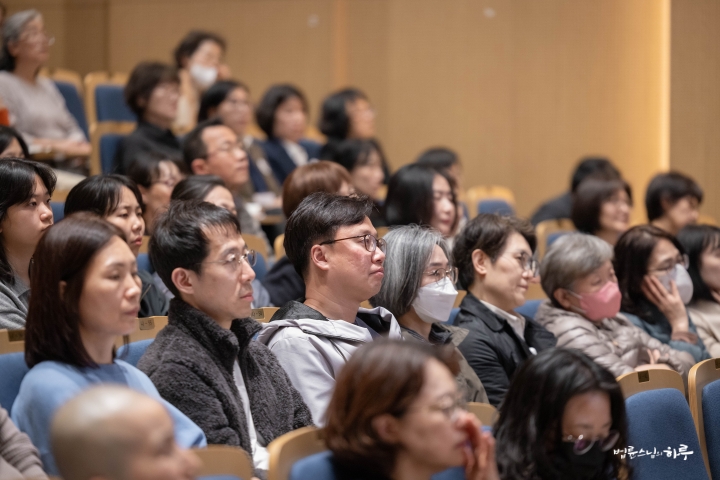
Modern Science’s View on the Origin of Life
Modern science views the emergence of life as a result of chemical bonding. In the early hot state of Earth, it was filled with various gases. As lightning struck, the degree of bonding became increasingly complex and larger, leading to the formation of macromolecular compounds. Organic matter emerged from inorganic substances, and through a process of increasing bond complexity, proteins were eventually formed. These proteins can be considered the beginning of life.
According to modern scientific research, DNA issues commands to RNA, which receives this information and creates amino acids in ribosomes to produce proteins. To discover how proteins were formed, scientist Miller conducted an experiment where he applied electrical discharge to methane, ammonia, and water vapor, resulting in the formation of amino acids. Since amino acids are components of proteins, this provided some verification. Similar to how the universe formed, life began when matter underwent highly complex bonding and then made a quantum leap to a new type of bond.
For life to be maintained, two essential functions are required. First, there must be a metabolic function that sustains life itself, meaning the ability to obtain and use energy from somewhere. Second, there must be a self-replication function. Replication refers to the ability to create an identical copy of oneself before dying, essentially enabling the prosperity of the species. These capabilities must exist for something to be considered alive.
How Is the Human Body Maintained?
The human body consists of 60 trillion cells. All these cells originated from a single fertilized egg. One cell divides to become two, then four, and eventually forms our eyes, ears, nose, mouth, and other body parts. When we eat food and digest it, our cells are continuously replaced. Therefore, the foundation of life is the cell. Each individual cell contains genetic information. Inside the cell is a nucleus, within the nucleus are chromosomes, and within the chromosomes is DNA, which contains genetic information.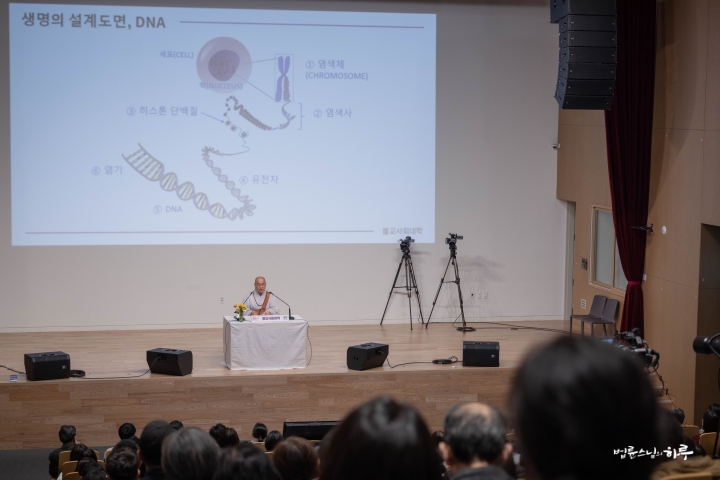
What does the digestion of carbohydrates, proteins, and fats involve? The molecular formula for glucose is C₆H₁₂O₆. Glucose (C₆H₁₂O₆) and oxygen (6O₂) react to produce carbon dioxide (6CO₂) and water (6H₂O), and energy is released in this process. This energy enables us to speak, think, and move. This glucose is produced through carbon assimilation. The chlorophyll in chloroplasts inside plant cells performs carbon assimilation. Six molecules of carbon dioxide (CO₂) and six molecules of water (H₂O) from the air, combined with sunlight energy, create one molecule of glucose (C₆H₁₂O₆) and six molecules of oxygen (O₂). In other words, chlorophyll absorbs solar energy and stores it in the form of chemical energy in glucose. Subsequently, when this glucose is broken down with oxygen, energy is released, and this energy is used for our living and activities. If carbon assimilation is the process of storing solar energy, then cellular respiration is the process of breaking down and releasing that energy, which occurs through the digestive process in our bodies. Animals can only digest, but plants can both collect and digest energy. The energy breakdown occurs in mitochondria within cells, while energy collection happens in chlorophyll. When organisms were single-celled, these processes occurred separately. However, when one bacterium entered another and established itself, mitochondria were formed, which break down matter to generate energy. Plants have both chlorophyll and mitochondria, while animals only have mitochondria. This is how life is maintained, with the cell as the basic unit.
All these processes occur within the cell. That’s why even a single cell can be extracted and replicated using its genetic information. The structure of a cell is incomparably more complex than that of an atom. Life functions occur when matter forms these highly complex bonds. Therefore, the foundation of life is the cell.
Cells contain genes. Nowadays, we’ve reached the stage where genes can be artificially manipulated to create varieties resistant to pests and diseases or to develop new species. Currently, genetic manipulation is being done for human benefit, but no one knows what side effects it might bring in the future. Nature, however, has conducted countless experiments and verifications over an immense period to reach its current state. That’s why nature is safe.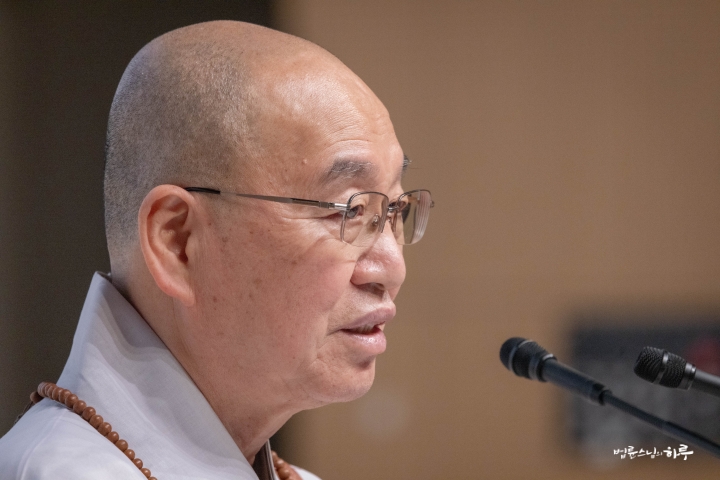
Material processes form the foundation for life phenomena, and human mental functions emerge from these life phenomena. Since humans are social and historical beings, we must view human existence within the context of all events occurring in society and history. With this broad and expansive perspective, we can resolve various social conflicts without bias. Today, our society is divided into extreme polarities. People lack a broad perspective and are trapped in their narrow viewpoints. It may seem like we must desperately choose between right and wrong, but that’s not actually the case. We need both a broad perspective and a detailed examination of what’s happening in reality. Within the constraints of specific time and space, we must make definitive decisions. If the world of emptiness (sunyata) is characterized by no fixed determinations, then the world of form (rupa) in daily life is characterized by determinations. These two don’t contradict each other. Form arises from emptiness, and must return to emptiness again. This perspective on worldly problems constitutes the social philosophy of Buddhism.”
Today’s session focused on understanding Buddhism’s dependent origination worldview from the perspective of the living world. The fifth lecture concluded with an announcement that the next session would explore the topic “Is Life Destiny or Free Will?” which will examine human mental functions.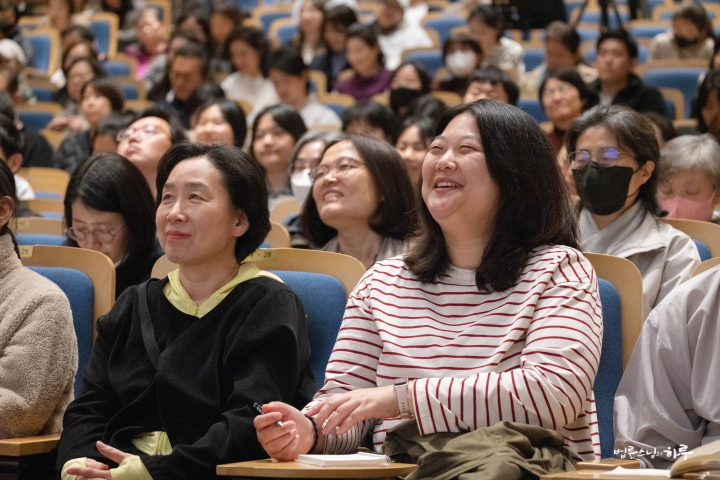
Participants gathered in groups for a heart-sharing session. During this time, they were able to reflect once more on what they had learned today.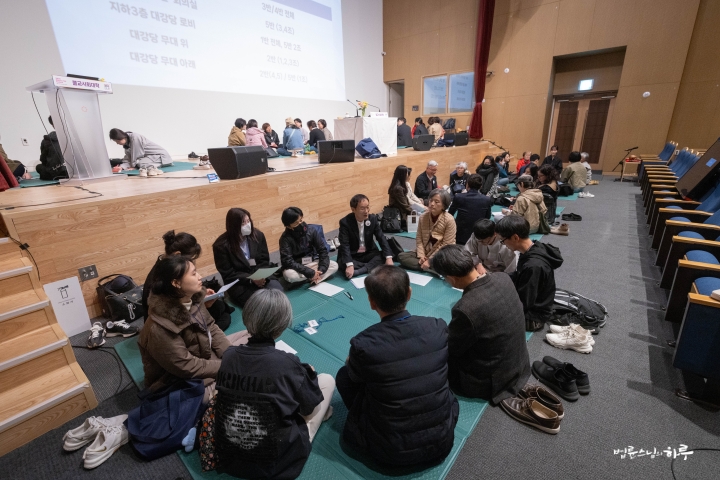
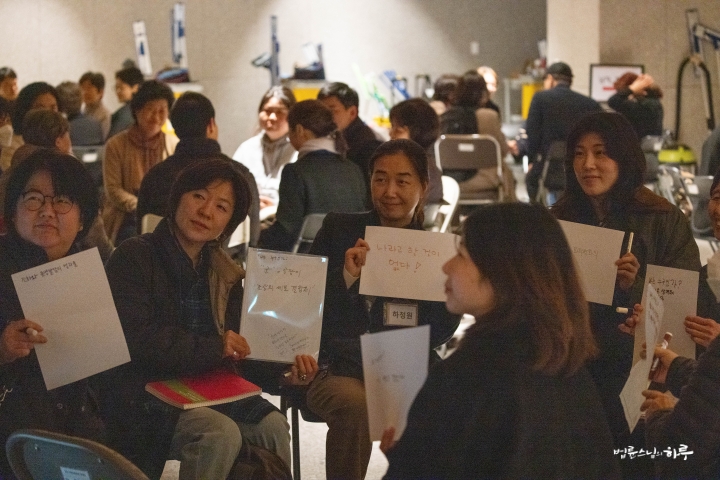
Tomorrow will be the 37th day of the 100-Day Dharma Talk. In the morning, Sunim will teach the third lecture of the daytime Jungto Dharma School. In the afternoon, he will hold consecutive meetings with visitors to The Peace Foundation, and in the evening, he will teach the third lecture of the evening Jungto Dharma School.




